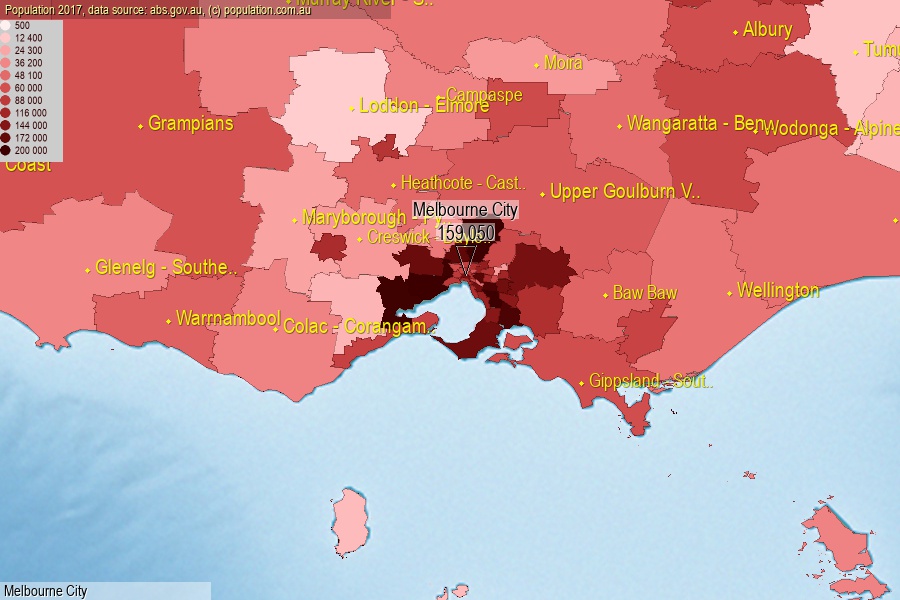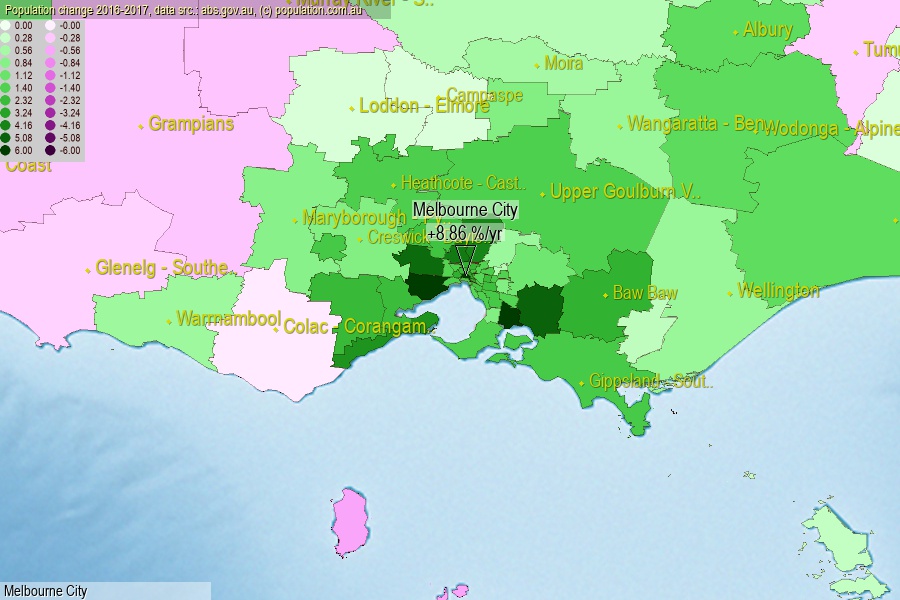 population.com.au
population.com.auLast official estimated population of Melbourne City (as Statistical Area Level 3) was 159 050 people (on 2017-06-30)[2]. This was 0.64% of total Australian population and 2.474% of VIC population. Area of Melbourne City is 31.00 km², in this year population density was 5 130.65 p/km² . If population growth rate would be same as in period 2016-2017 (+8.86%/yr), Melbourne City population in 2025 would be 313 780. [0]



Click to enlarge. Melbourne City is located in the center of the images.
Population [people], population density [p./km²] and population change [%/year] [2]
View borders » (new window) [4]
[1991-1992] +0.21 %/Y
[1992-1993] +0.79 %/Y
[1993-1994] +2.28 %/Y
[1994-1995] +3.36 %/Y
[1995-1996] +5.09 %/Y
[1996-1997] +4.86 %/Y
[1997-1998] +2.98 %/Y
[1998-1999] +4.42 %/Y
[1999-2000] +5.50 %/Y
[2000-2001] +5.15 %/Y
[2001-2002] +9.37 %/Y
[2002-2003] +9.17 %/Y
[2003-2004] +8.14 %/Y
[2004-2005] +6.52 %/Y
[2005-2006] +5.19 %/Y
[2006-2007] +6.22 %/Y
[2007-2008] +5.46 %/Y
[2008-2009] +5.05 %/Y
[2009-2010] +3.44 %/Y
[2010-2011] +2.72 %/Y
[2011-2012] +7.33 %/Y
[2012-2013] +10.35 %/Y
[2013-2014] +7.81 %/Y
[2014-2015] +6.95 %/Y
[2015-2016] +6.74 %/Y
[2016-2017] +8.86 %/Y
[0] Calculated with linear interpolation from officially estimated population
[1] Read more about SA3 and Australian Statistical Geography Standard (ASGS) on abs.gov.au
[2] Population data from Australian Bureau of Statistics (Population and density: 2017; change: 2016-2017)
[3] Digital Boundaries: Australian Statistical Geography Standard (ASGS) 2016.
[4] Border coordinates are simplifyed using Ramer-Douglas-Peucker algorithm.